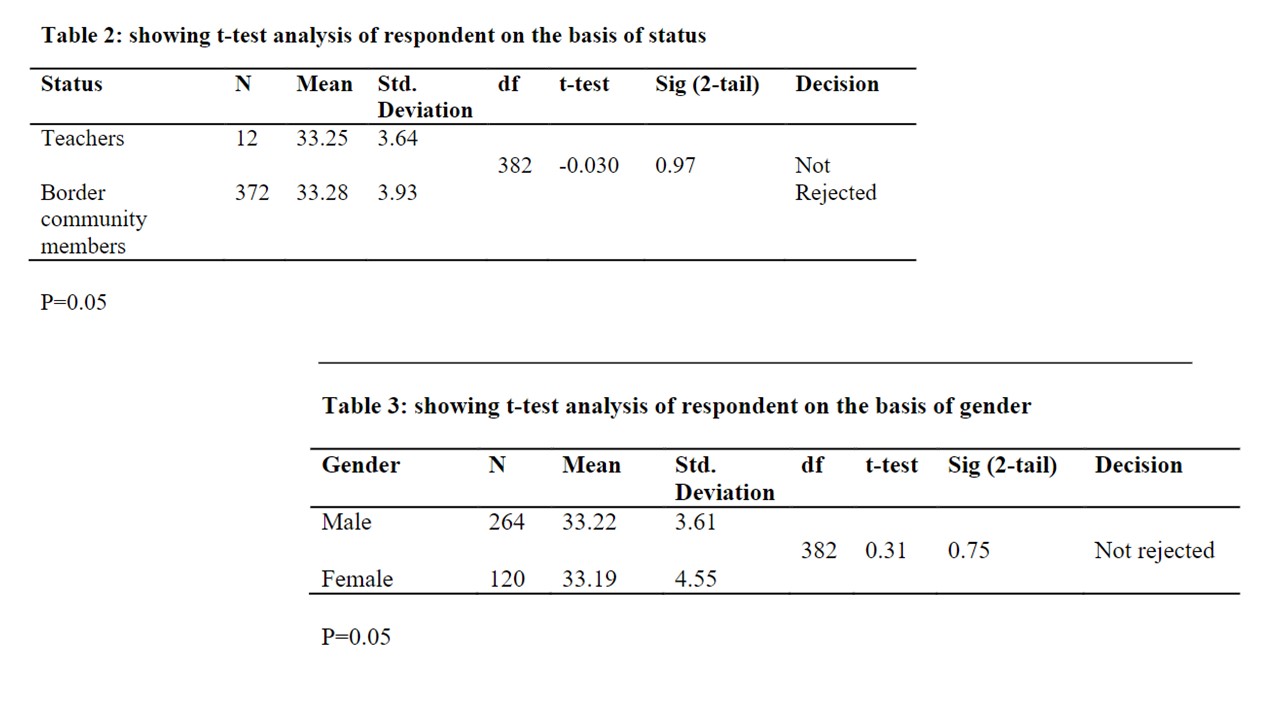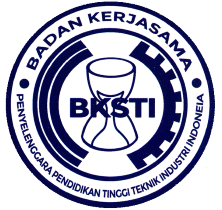EDUCATING BORDER DWELLERS TO PROMOTE PEACE AND SECURITY IN AN ELECTORAL PROCESS: PERCEPTION OF COMMUNITY MEMBERS
DOI:
https://doi.org/10.12928/spekta.v1i2.2793Keywords:
Border Dwellers, Peace, Security and Electoral processAbstract
This study examined the perception of border community members on educating border dwellers so as to promote peace and security in an electoral process in Nigeria. The study adopted a descriptive survey design, with a target population of This study examined the perception of border community members on educating border dwellers so as to promote peace and security in an electoral process in Nigeria. The study adopted a descriptive survey design, with a target population of Zamfara states Zurmi Local Government Areas border communities of Gurbin Bore. Researchers designed questionnaire with psychometric properties of content validity of 0.61 and a reliability index of 0.87 was used to elicit the needed data from the respondents. A multistage sampling technique was used to sample 384 respondents. The research questions and hypotheses were analyzed using mean score and t-test. The finding revealed that all the community members perceive educating them as a welcome development that would help in breeding youth that is needed in an electoral process. It was thus, recommended among others that, the government should provide qualitative education for people residing in the international border areas
References
Aliu, S. (2001, January).The competitive drive, new technologies, and employment: the human capital link. Paper presented at the second tripartite conference of manpower planners. Chelsea Hotel, Abuja.
Apple, M. (1969). Ideology and curriculum. New York: Routledge.
Boulding, E. (1988). Building a global civic culture: Education for an interdependent world. New York: Teachers College Press.
Central Bank of Nigeria (2000) in Rahji, M. A. Y. Primary school enrolment and gender gap of rural households children in Southwestern Nigeria. Retrieved from: www.saga.cornell.edu/saga/educconf/rahji.pdf .
Denga, D.I. (1993). Education at a glance: From cradle to tomb. Calabar: Rapid Educational Publishers Ltd.
Denga. D. I. (1999). The eve of the 21st Century: Threshold education strategies for entry and sustainable development. Calabar: Rapid Educational Publishers. Ltd.
Ebong, J. M. (2006). Understanding the economics of education. Port Harcourt:Eagle Lithograph press.
Ekwuruke H.(2007). The State of Youth in Nigeria: What We Want? Nando Foundation Inc.
Federal Republic of Nigeria (2004). .National policy on education. Lagos: NERDC Press.
Federal Republic of Nigeria (2009). National Bureau of Statistics: Socialstatistics in Nigeria. Retrieved from:www.Nigeriapopulation.org
Folami, A. O. & Karimu, O. O. (2010, June 21). Climate change and cross-border crime in Nigeria. Paper presented at the 250th Anniversary Conference Organized for the Royal Norwegian Society of Sciences and Letter on Climate Change and Security in Trondheim, Norway.
Freire, P. (1970). Pedagogy of the oppressed. New York: Continuum Publishing.
Giroux, H. (2006). Stormy weather: Hurricane Katrina and the politics of disability. Boulder, CO: Paradigm Publishers.
Laogun, E. A. (2002). “Rural Youth Training Needs for Rural Community Development.†Nigerian Journal of Rural Sociology, 3,2, 57-63.
Luka, E.O. (2005). Border people and the national economy. Research submitted to the international community foundation: Blurred boundaries, trans-boundary impacts, and solutions in the
San Diego-Tijuana border region. Retrieved from: www.icfdn.org/publications/blurredborders/documents/execsummary.pdf
Mayor, F. (2005). Democracy, nonviolence, and peace. In The Earth Charter inAction: Toward a Sustainable World, edited by Peter Blaze Corcoran, Mirian Vilela, and Alide Roerink, 117-119. Amsterdam: KIT Publishers.
McLaren, P. (1989). Life in schools. New York: Longman.
Olujide, M.G. (1999). “The Role of Nigerian Integrated Rural Accelerated Development Organisation (NIRADO) in Farm Children Development in Lagos State.†Technical Report of NIRADO,
Lagos, pp. 1-37.
Olujide, M. G (2008). The attitude of Youth Towards Rural Development Projects in Lagos State, Nigeria.Journal of SocialSciences, 17,2, 163-167
Omundi index (2012). Ghana Demographics Profile 2012.Retrieved from: wwwfile://C201%20demographics_profile.html.
Oyeku, E. A. & Ayodele, O.O. (2010). Research Methodology. Ogun: Merci Production.
Price, F. (2005). The Bakassi peninsula: the border dispute between Nigeria and Cameroon. Retrieved from: www.icj- cij.org/icjwww/ipresscom/ipress2002/ipresscom200226_20021010.h tm.
Preyekuro I. & Agnes, E. M.(2011). Youths, electoral violence and democratic consolidation in Nigeria. Anthropologist, 13,3,217-225
Reardon, B.(2001). Education for a culture of peace from a gender perspective. Paris: UNESCO.
Sambo, A. A. (2008). Research methods in education. Edo: Stirling-Horden Publishers.
Singh, K. & Rangnekar, U.S. (2000). A profile report on a pre-project survey of border area development programmes in developing countries. Retrieved from: www.pbplanning.gov.in/pdf/Annexure-VI.pdf.
Swastik N. (2014). Notes on the true Meaning, Definition, and Concept of Education. retrieved from:www.preservearticles.com/201105056299/meaning-and- definition-and- concept-of-education.htm
The Research Advisors (2006). Sample size table. Retrieved from: http://research- advisors.com.
Yusuf, A., Amali, I. O. O. & Ajidagba, U. A. (2011).Teachers assessment of the quality of the basic education in the border area of Kwara State, Nigeria. African Journal of Historical Sciences in Education.7,2, 60-67.

Downloads
Published
How to Cite
Issue
Section
License
Copyright (c) 2020 Bello Bolanle Muhinat

This work is licensed under a Creative Commons Attribution-ShareAlike 4.0 International License.
Authors who publish with SPEKTA (Jurnal Pengabdian Kepada Masyarakat: Teknologi dan Aplikasi) agree to the following terms:
- Authors retain copyright and grant the journal the right of first publication with the work simultaneously licensed under a Creative Commons Attribution License (CC BY-SA 4.0) that allows others to share the work with an acknowledgment of the work's authorship and initial publication in this journal.
- Authors are able to enter into separate, additional contractual arrangements for the non-exclusive distribution of the journal's published version of the work (e.g., post it to an institutional repository or publish it in a book), with an acknowledgment of its initial publication in this journal.
- Authors are permitted and encouraged to post their work online (e.g., in institutional repositories or on their website) prior to and during the submission process, as it can lead to productive exchanges, as well as earlier and greater citation of published work.

This work is licensed under a Creative Commons Attribution-ShareAlike 4.0 International License.













